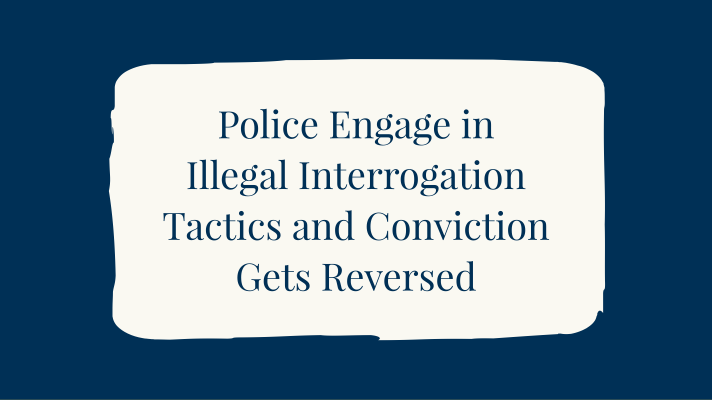
In State v. Escalante, the WA Supreme Court held that separating a person from the normal stream of traffic and detaining them for five hours in a locked room that was inaccessible to the public or other travelers will create the type of police-dominated environment requires Miranda warnings.
BACKGROUND FACTS
In August 2017, Mr. Escalante was traveling in a van with a group of friends, heading back into Washington from Canada. They were all returning from the Shambala Music Festival in British Columbia. At the Frontier Border Crossing, patrol agents searched all vehicles coming from the festival as part of a drug enforcement operation. Escalante and his friends were directed to the secondary inspection area. Border patrol agents took their documents.
The secondary inspection lobby was an 11 x 14 foot locked room. It is not accessible to the public or other travelers. Detainees are not allowed to use the bathroom or access water without getting permission from agents and submitting to a pat-down search. Agents patted down all four men and found narcotics on the driver and one passenger, but not on Escalante or the other passenger. Agents kept all the men secured – either in the locked lobby or in the detention cells – for five hours while they searched the van.
The search uncovered drug paraphernalia and personal items containing drugs, including a backpack with small amounts of heroin and lysergic acid diethylamide (LSD). Without giving Miranda warnings, agents confronted the men with each item of drug paraphernalia and each item in which drugs were found and asked who owned it.
Escalante admitted he owned the backpack. At that time, Escalante and his companion were the only travelers in the secured lobby. Eventually, the Border Patrol Agents summoned local law enforcement and held Escalante until they arrived. These officers formally arrested Escalante and gave him Miranda warnings.
Escalante was charged in state court with possession of heroin and LSD. He moved to suppress his statement claiming ownership of the backpack because it was obtained in custody by interrogation without Miranda warnings. However, the trial court admitted Escalante’s incriminating statement. Escalante was convicted at trial. The Court of Appeals affirmed. The case eventually made its way to the WA Supreme Court.
COURT’S ANALYSIS & CONCLUSIONS
The WA Supreme Court explained that the Fifth Amendment guarantees that individuals will not be compelled by the government to incriminate themselves. In short, the Fifth Amendment protects an individual’s right to remain silent, in and out of court, unless he chooses to speak in the unfettered exercise of his own will.
The Court also explained that in order to assure an individual freely makes the choice to talk to the police, Miranda requires that before custodial interrogation, the police inform a suspect of their right to remain silent and their right to the presence of an attorney, appointed or retained.
Evaluating the totality of the circumstances, the Court concluded that a reasonable person in Escalante’s circumstances would have felt their freedom of action was curtailed to a degree associated with formal arrest:
“Agents confiscated Escalante’s documents, routed him to a secondary inspection area, separated him from his belongings, arrested the driver of the van in which he was traveling, and detained him for five hours in a small locked lobby that was not accessible to the public or other travelers. After a lengthy detention, he was questioned using a procedure that communicated agents had found drugs and were suspicious of him. These circumstances created precisely the type of incommunicado police-dominated environment that was the concern of Miranda. We hold that Escalante was in custody and his unwarned statements should have been suppressed.”
With that, the WA Supreme Court reversed and vacated Mr. Escalante’s convictions.
My opinion? Good decision. Escalante should have been informed of his Miranda rights. Clearly, that the statements he made resulted from direct interrogation by the officers and were not spontaneous and unsolicited statements of a person who was anxious to explain.
Please contact my office if you, a friend or family member are charged with a crime after giving incriminating statement and/or undergoing a questionable search or seizure. Hiring a competent and experienced defense attorney is the first and best step toward justice.
















